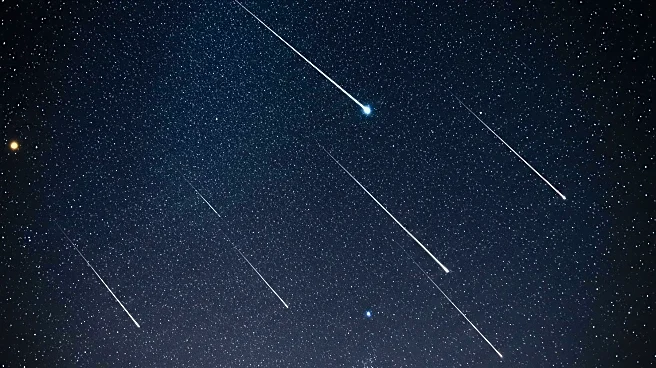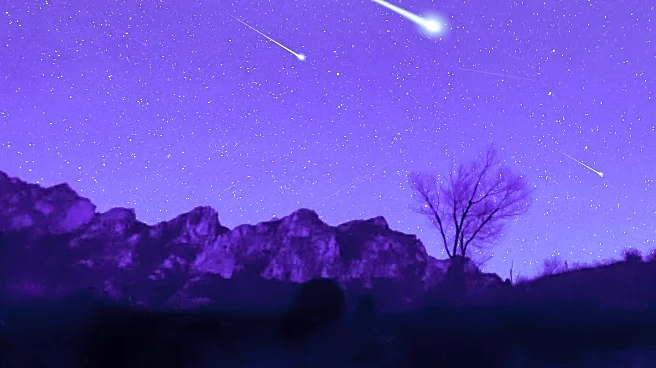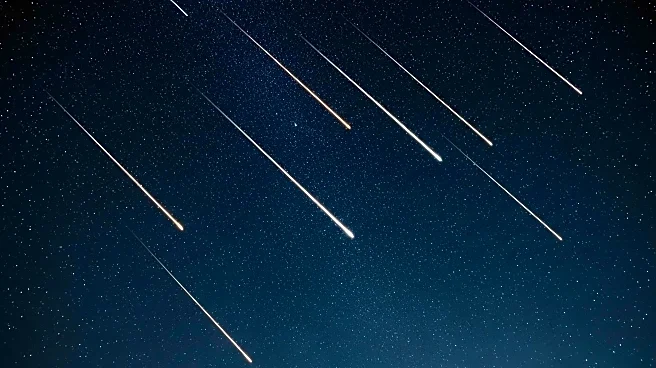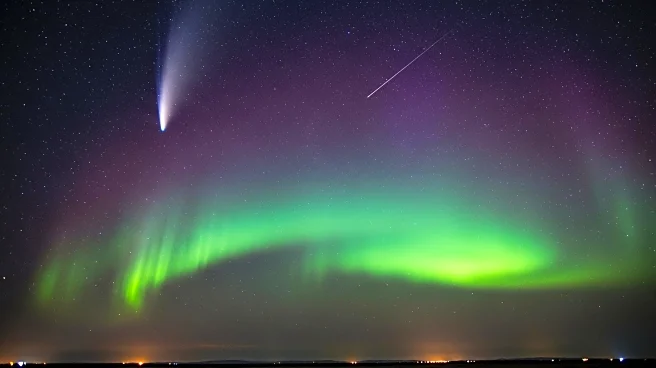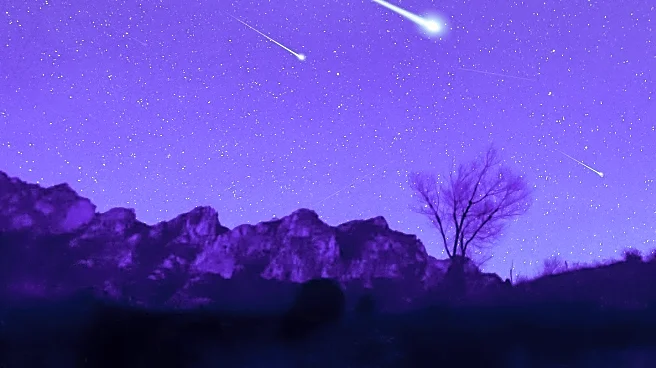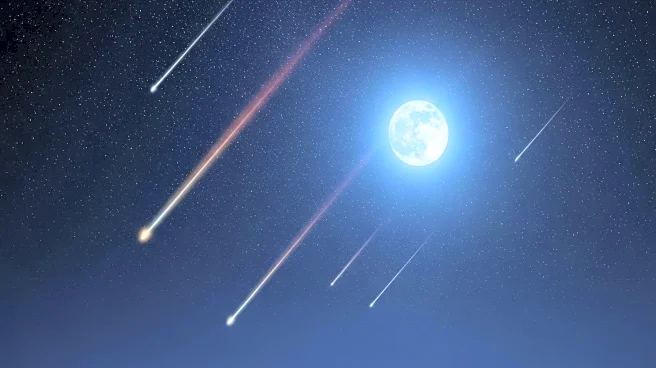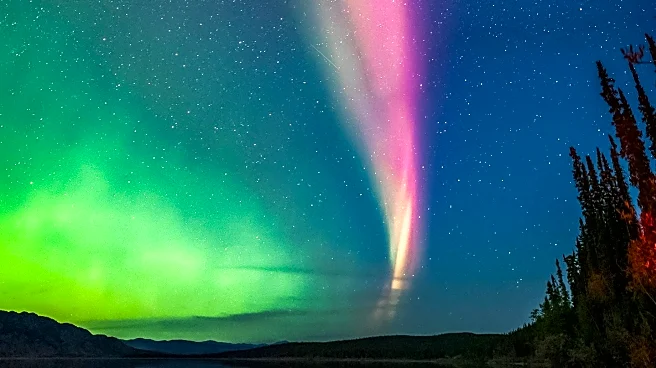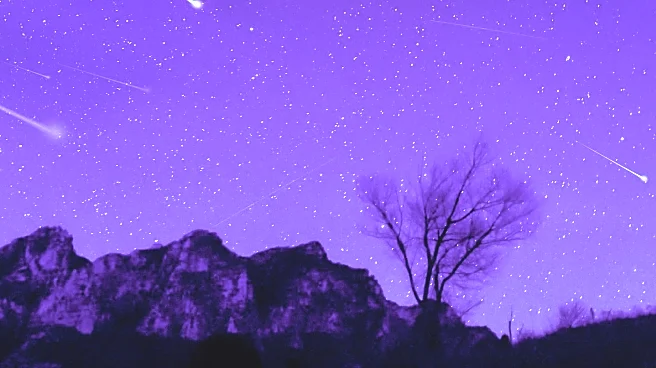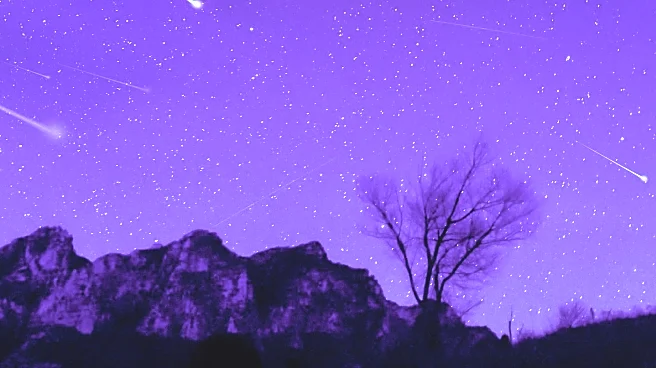What's Happening?
This weekend, skywatchers are in for a treat with a series of celestial events, including a supermoon, a close encounter between the Moon and Saturn, and the Draconid meteor shower. October 4 marks International Observe the Moon Night, led by NASA, with over 950 events worldwide to encourage lunar observation and education. The Harvest Supermoon, the first of 2025, will appear 30% brighter and 14% larger than usual, peaking on October 6. On October 5, the Moon will closely align with Saturn, offering a spectacular view. However, the Draconid meteor shower, peaking around October 8, may be overshadowed by the supermoon's brightness, reducing visibility of the meteors.
Why It's Important?
These events highlight the ongoing interest and engagement in astronomy and space science, facilitated by organizations like NASA. The global participation in International Observe the Moon Night underscores the public's fascination with lunar science and exploration. The supermoon and Saturn's conjunction provide unique observational opportunities, fostering public interest in astronomy. However, the supermoon's brightness poses challenges for meteor observation, demonstrating the interplay between celestial events and observational conditions. This weekend's events also serve as a reminder of the dynamic nature of our solar system and the importance of public science education.
What's Next?
Following the Draconids, the Orionid meteor shower is expected to peak on October 21, coinciding with a new moon, which will provide ideal dark sky conditions for viewing. Comet C/2025 R2 (SWAN) is also making its debut in the northern skies, offering another opportunity for observation. As these events unfold, they are likely to continue to engage amateur astronomers and the general public, promoting further interest in space science and observation. NASA and other organizations will likely continue to support public engagement through events and educational resources.
Beyond the Headlines
The convergence of these celestial events highlights the cultural and educational significance of astronomy. Events like International Observe the Moon Night not only promote scientific literacy but also foster a sense of global community through shared experiences of observing the night sky. The challenges posed by the supermoon's brightness on meteor observation also illustrate the complexities of astronomical observation and the need for adaptive strategies in amateur astronomy.

